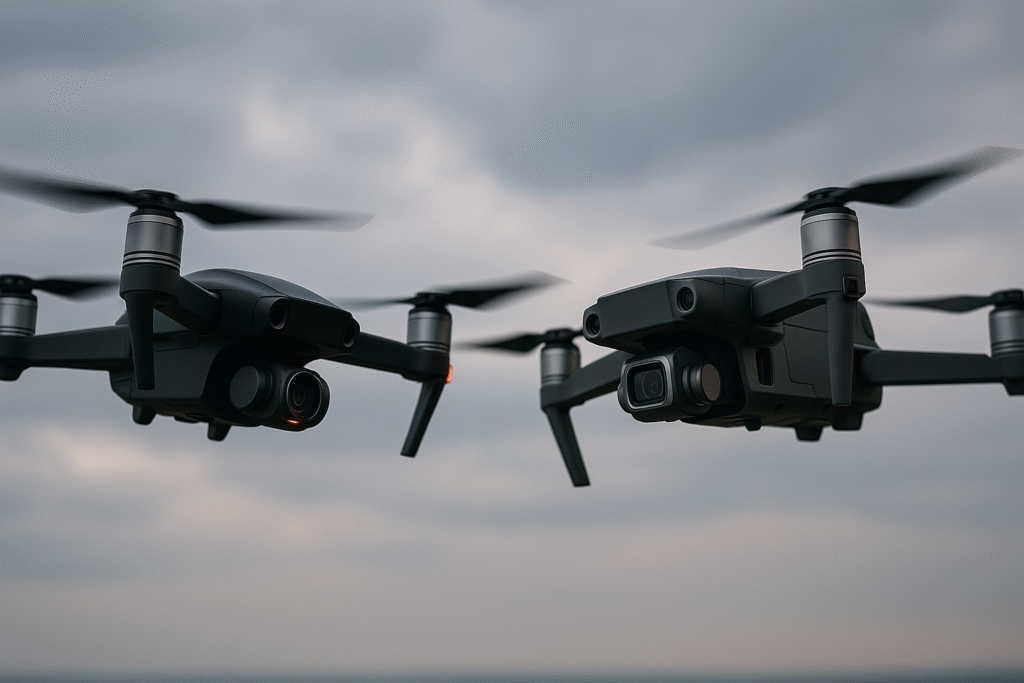In modern conflicts, small drones are proving to be as dangerous as they are cheap. In Ukraine, quadcopters have been used to drop explosives directly into trenches and armored vehicles, with battlefield footage showing soldiers scrambling to shoot them down before impact. Similar tactics have been seen in the Red Sea, where Houthi forces have used drones to harass and damage commercial ships despite multinational naval patrols.
For small patrols, lone operators, or security teams guarding critical infrastructure, portable and affordable counter-drone tools are scarce. Wrap Technologies (NASDAQ: WRAP), best known for its non-lethal BolaWrap device used by police, intends to fill that gap and gain a foothold in the counter-unmanned aircraft systems (C-UAS) market, which is projected to grow from an estimated $2.5 billion in 2024 to more than $6.8 billion by 2030.
From Police Belts to Battlefields
Wrap’s flagship BolaWrap 150 is a handheld, pre-escalation tool designed to give officers a brief window of time to take control of heightened interactions between law enforcement and civilians, before they escalate towards the use of force. The tool uses sight, sound, and tactile sensation to create a short, multi-sensory distraction, allowing officers to intervene safely. It is currently used by more than 1,000 agencies in the U.S. and in 60 countries.
The company realized the same Kevlar technology powering BolaWrap could be aimed upward. Fire a tether at a low-flying drone, and you can foul its rotors mid-air, sending it to the ground intact.
This summer, Wrap began testing that idea and is conducting R&D on two new C-UAS products aimed at thwarting drone threats, both mid-flight and on the ground.
Merlin-1: Airborne Interceptor
Wrap-Merlin 1 is a modular, drone-mounted payload designed to intercept other drones in flight. Mounted on a first-person-view (FPV) drone, it can carry up to six BolaWrap cassettes, each capable of disabling a target by entangling it.
“Wrap-Merlin 1 is expected to transform the BolaWrap 150 from a ground-based tool into an airborne defensive asset,” said Michael Brown, Wrap’s Vice President of Products.
The system is designed to integrate with Department of Defense Blue UAS-approved platforms, NATO-aligned drones, and commercial security systems. Its open-architecture design and 3D-printable mounts allow it to be customized for different missions and deployed quickly— a key consideration as drone threats evolve faster than traditional procurement cycles.
PAN-DA: Personal Last-Line Defense
Just two days after unveiling Merlin-1, Wrap announced plans for Project PAN-DA (Personal Anti-Drone Armament), a belt-carried, handheld device built for defense personnel and international operators facing close-range aerial threats from the ground. Using the same tether-and-anchor system as the BolaWrap 150, PAN-DA is aimed at disabling small unmanned aerial systems when other countermeasures aren’t available or effective.
“PAN-DA builds on the proven BolaWrap platform, which we believe will give operators a lightweight, reliable, and non-lethal means of defending themselves and their environment from drone threats,” said Brown.
While the system could be deployed by a range of defense operators, the most immediate scenario is soldiers on patrol. When a hostile drone appears at close range, PAN-DA can be drawn from the belt, aimed, and fired to foul a drone’s rotors mid-air. Wrap has already released a phase one proof-of-concept video, showing the system in action during early testing.
The company describes PAN-DA as compact, reloadable, and capable of multiple engagements per unit. Pitched as a complement to detection and jamming systems rather than a replacement, it acts as a last-ditch tool for defense personnel when a drone is already within striking distance.
Addressing the Growing C-UAS Market
Wrap’s move comes as publicly traded C-UAS players are gaining investor attention. AeroVironment (NASDAQ: AVAV) has bolstered its counter-drone capabilities through acquisitions and is up more than 60% this year. Kratos Defense (NASDAQ: KTOS) has seen significant gains following increased Pentagon spending for drone systems. Australia’s DroneShield (ASX: DRO) has built a $500 million sales pipeline, including U.S. contracts.
Most competitors focus on detection, jamming, or destroying drones with missiles or lasers. While some defense innovators experiment with blockchain-based logistics and procurement systems, Wrap is entering a narrower niche of reusable, kinetic interceptors designed for portability and cost efficiency. That positioning could appeal to defense buyers looking for scalable solutions that don’t require extensive infrastructure or high per-engagement costs.
From Law Enforcement to Defense
For Wrap, the move into counter-drone technology marks a significant shift from its roots in law enforcement tools. By adapting the BolaWrap’s tether-based platform for airborne and handheld anti-drone systems, the company is betting on its ability to scale into new markets without the cost of building entirely new platforms.
“By taking our proven Kevlar-corded system into the air, we’re addressing an urgent need in drone defense with a capability that we believe is affordable, adaptable, and immediately relevant to both domestic and international missions,” said Jared Novick, Wrap’s President and Chief Operating Officer.
With development testing underway for both Merlin-1 and PAN-DA, Wrap aims to refine performance, expand range, and ensure interoperability with existing defense systems. Whether that translates into procurement contracts will depend on how quickly the company can demonstrate real-world effectiveness in both battlefield and critical infrastructure protection scenarios.
For now, the company’s pivot into C-UAS puts it in a market with both intense competition and strong tailwinds. If it can carve out a niche with low-cost, reusable systems, Wrap could turn a policing tool into a battlefield asset— and give investors a small-cap defense tech story worth watching.
This industry announcement article is for informational and educational purposes only and does not constitute financial or investment advice.













